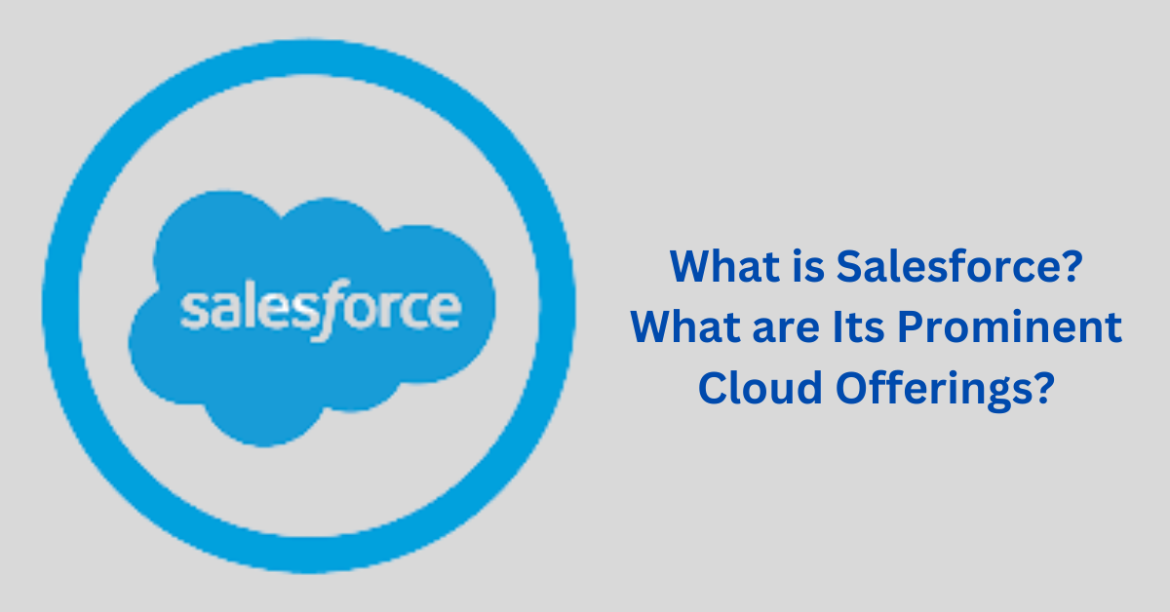Introduction to Salesforce:
Salesforce is the most popular CRM software on the market. It’s used by businesses of all sizes to manage their sales process and track customer interactions. If you’re looking to get started with CRM, Salesforce is a great place to start. Salesforce is also an online customer relationship management (CRM) system used by businesses of all sizes to manage customer data and relationships. Salesforce offers a variety of features, including the ability to create and manage custom applications, connect to other systems, and track sales leads. The platform is free for up to 10 users, with additional features available for purchase.
What is Salesforce?
Salesforce is the world’s leading CRM (customer relationship management) platform. With more than 330 million customers, it’s the perfect tool for small businesses and enterprise organizations of all sizes. This provides an easy-to-use interface that enables you to manage your customer relationships in one place. You can easily create custom segments, contacts, opportunities, and pipelines to target specific types of customers or leads. Plus, with its powerful automation capabilities, Salesforce helps you streamline your sales process and increase efficiency. If you’re looking for a comprehensive CRM solution that can help your business grow, Salesforce is the perfect choice. If you also are interested to step up for the new world of rising job opportunities in cloud then Salesforce Training in Hyderabad course offered by the Kelly Technologies can be of great help.
It offers a comprehensive platform for managing contacts, sales transactions, and customer data. The Salesforce platform uses by business owners, sales representatives, customers, and partners to collaborate and capture information.
Prominent Salesforce Cloud Offerings:
-
Sales Cloud
Salesforce Sales Cloud is a powerful CRM platform use by businesses of all sizes to manage their sales processes. It offers an intuitive interface, scalability, and integrations with other software tools, making it a perfect choice for any business. With Salesforce Sales Cloud, you can also manage your sales leads, contacts, deals, and contracts from one place, track your performance against goals, and get real-time insights into how your sales teams are performing.
The platform provides users with an easy way to create, share, and access sales data from multiple sources, including Salesforce CRM and other external applications. The Sales Cloud also supports real-time communication between sales professionals and customers through chat, email, and phone calls.
-
Service Cloud
Salesforce Service Cloud is a new addition to the product offering that allows customers to run their business using software that provides cloud-based customer relationship management (CRM) and sales productivity tools. This Service Cloud also helps improve customer engagement and collaboration. Making it easier for sales teams to connect with customers and manage leads.
The services offers a variety of features, such as appointment scheduling and lead scoring, that can help sales teams process and qualify leads more quickly. In addition, the service provides users with access to powerful reporting capabilities that can help them analyze data and make smarter decisions.
-
Marketing Cloud
Salesforce Marketing Cloud is a suite of Salesforce products that helps companies manage marketing campaigns, optimize sales leads, and measure the performance of their marketing efforts. The cloud-based platform makes it easy for companies to access and also use data from all their marketing channels in one place, making it easier to track progress and make better decisions.
The Salesforce Marketing Cloud is an all-in-one marketing automation platform that lets you manage your campaigns from one place. You can use it to connect with your customers across all channels, track your marketing performance, and measure the results to optimize your campaigns for success.
-
Commerce Cloud
Salesforce Commerce Cloud is an e-commerce platform that allows businesses to manage their sales and marketing campaigns. As well as their customer relationships in one place. The platform has a number of features that make it a popular choice for businesses of all sizes. For example, the platform has powerful search capabilities that make it easy to find the information you’re looking for. Additionally, Salesforce Commerce Cloud makes it easy to create and manage your own custom modules and integrations, making it perfect for businesses with complex sales processes.
-
Analytics Cloud
The Salesforce Analytics Cloud offers businesses a way to collect data from their sales and marketing operations, and use that data to improve their operations. This Analytics Cloud can help businesses track customer behavior, identify sales opportunities, forecast future sales performance, and more. By using this Analytics Cloud, you can improve your customer acquisition, retention, and churn rates. You can also see which customer segments are profitable and which ones are not. Additionally, you can identify opportunities and defects in your sales processes.
Conclusion:
In conclusion, this article in Global Reports has given you information about Salesforce. Salesforce offers a number of powerful cloud-based offerings that can help your business grow and succeed. From project management to lead tracking and more. These tools can help you streamline your work and make more efficient decisions. So if you’re looking for an innovative way to manage your business, check out Salesforce’s cloud offerings!




